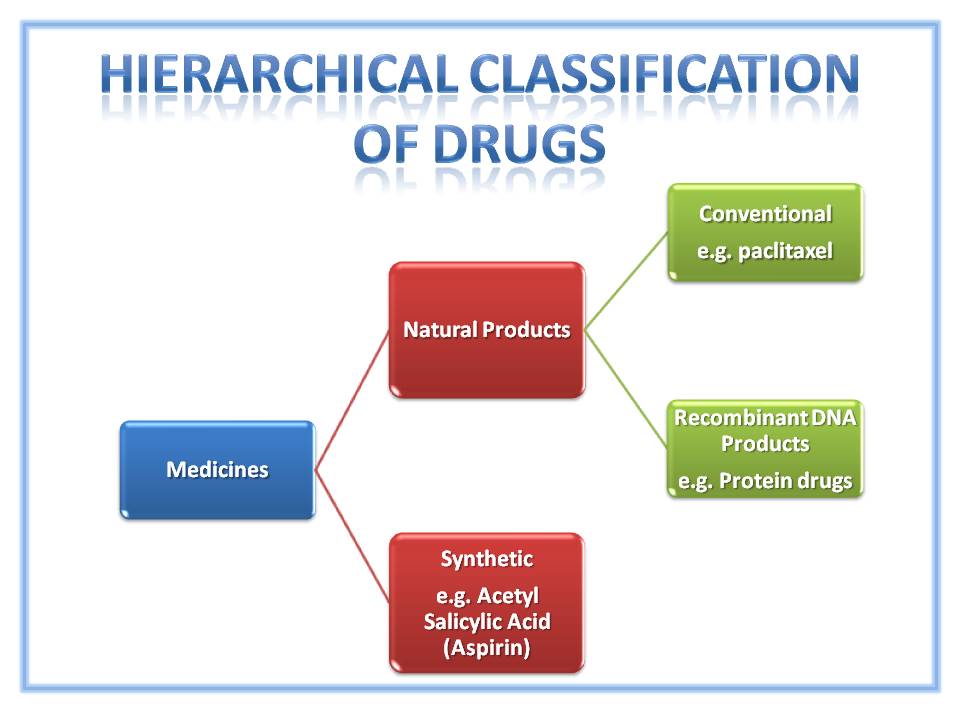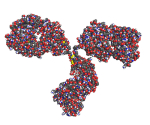Introduction
Medicines can be separated into two broad groups. The first is ‘Synthetic Medicines‘. As the name suggests they are created through supervised chemical synthesis. The associated chemical reactions are relatively simple and often sequential. The final active substances produced are small molecules with relatively simple chemical structures, an example being aspirin (Figure 2).
Natural Products
By contrast natural products are derived from comparatively complex starting materials sourced from the ‘Natural Environment‘. More specifically, they are derived from living organisms or their by-products. Traditionally, these living organisms have been plants from which relatively complex compounds have been extracted, purified and used as medicines. In some cases these compounds have been chemically-modified giving rise to ‘Semi-synthetic‘ drugs. An example from this group is paclitaxel which is derived from bark extracts of the Pacific Yew Tree (Taxus brevifolia) (Craig & Stitzel, 1994: 694) and used to treat various cancers.
Share this Post
Recombinant Products
The most structurally complex group of pharmaceuticals is a sub-group of ‘Natural Products‘ that are termed ‘Recombinant Products‘. They are derived from ‘Natural Sources‘ but the genetic material (DNA) coding for these products in living organisms is deliberately altered to yield a product with specific characteristics.
This is commonly referred to as “Genetic Engineering (GE)” and results in proteins which typically are not found in nature. Invariably the process requires ‘combining‘ genetic material from different species so the term ‘Recombinant‘ is included in the name of the final product to reflect this. One such example is, ‘Recombinant Interferon alpha-2b‘ (Rieger, 1995: 71).
A major distinction between conventional ‘small-molecule‘ pharmaceuticals and this newer class of recombinant proteins is molecular weight and structural complexity. As suggested by Figure 2, Aspirin, an example of a conventional pharmaceutical product is relatively small and structurally simple. This contrasts significantly with the diagram of a ‘monoclonal antibody (mAb)‘ in Figure 3 which falls in the category of large, highly complex ‘recombinant proteins‘. The scale in both diagrams is not equal but in both cases the black / dark grey balls represent Carbon atoms. With a little imagination, it becomes clear that were they represented to equal scale, the mAb would be many hundreds and possibly thousands of times larger and more complex than aspirin. This single difference has many implications for use and storage of recombinant proteins and many of these implications will be explored in greater detail in future posts.
References
- Craig,C.R. & Stitzel, R.E. (1994) Modern Pharmacology. 4th ed. Boston: Little, Brown and Company.
- Rieger, P.T. (1995) Biotherapy: A Comprehensive Overview. 1st ed. London: Jones and Bartlett Publishers International.






14 Comments on “Classification of Pharmaceuticals: Biologics vs. Conventional Medicines”
Whats up! I just want to give a huge thumbs up for the nice info you have got here on this post. I will be coming back again to your web site for more soon
Does any person know of any forums that discuss this issue in additional depth? I am mesmerized.
Once again, great post! couldn’t keep myself from telling you that 🙂
Hello, Neat post. There is a problem along with your web site in web explorer, might check this¡K IE still is the marketplace leader and a huge component to folks will leave out your fantastic writing due to this problem.
Hello, I simply wanted to take time to make a comment and say I have really enjoyed reading your site.
My blog is about Fitness tips.
I seriously enjoy what you post right here. Extremely insightful and intelligent. One concern though. I’m running Firefox with Debian and parts of your current page layout pieces are a little wonky. I realize it’s not a normal set up. But it’s something to hold in the mind. I wish that it will probably help and keep the finest quality writing.
Just cause it’s simple doesn’t mean it’s not super hlefpul.
That is a really good bit of information you have written up there, I really think you have a nice site here. Thanks bud.
Thanks for a marvelous posting! I truly enjoyed reading it, you can be a great author.I will be sure to bookmark your blog and will come back later on. I want to encourage that you continue your great work, have a nice day!
Hi, this is a well written post. I just bookmarked your site. Please continue the amazingly good posting.
Someone I work with visits your site regularly and recommended it to me to read also. The writing style is great and the content is relevant. Thanks for the insight you provide the readers!
Thank you for the article… I will be coming back on here more often.
Greetings. I think there is something wrong with your RSS feed. I hope you can repair it!
Thanks Myriam we’ll get on it.